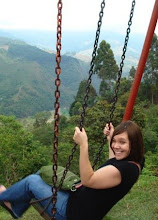I have posted a LOT of videos and pictures and information to help you with the science final. PLEASE PLEASE PLEASE... read and study everything I have posted, and tell all your friends to do the same. It is very important everyone uses this blog because we haven't reviewed very much in class. We will review tomorrow morning, but not for very long because we need to review for math.
DO NOT FORGET: Your math final is Wednesday!! Also, there is an extra credit assignment in a different post. Please do it! It will help your grade!
Okay... on to science... this is the last review I will post.
PRACTICE TEST!
1. What is a moon?
2. Name two ways the Earth and the Moon are the same, and two ways they are different.
4. What happens when an asteroid or meteorite hits the moon?
5. What do we call the part of the moon we can't see?
6. Who was the first person to walk on the moon, and what year did that happen? (I posted a video of this earlier.)
7. Draw the phases of the moon.
8. When the moon is waxing, what is it doing?
10. When the moon is wanning, what is it doing?
11. When can we see the entire moon?
12. When can we not see the moon?
13. Draw a solar and lunar eclipse.
14. Draw the phases of the moon.
15. Draw a crater.
The second section is about the solar system and the universe. It is also multiple choice and drawing pictures You should study...
1. What is the universe made of?
2. Describe the life cycle of a star.
3. What star is closest to us, and how old is it?
4. What is the Milky Way?
5. There are four types of galaxies. Draw them and label each type.
6. What is a constellation? What are some famous constellations?
7. What is the difference between asteroids and comets?
8. Where is the asteroid belt?
9. Draw the planets in order.
10. Which planet is the biggest?
11. Which planet has rings around it?
12. Which planets are closest to Earth?
13. Which planet is the farthest away?
14. What is a dwarf planet? What is the name of a dwarf planet in our solar system?
15. What is gravity?
16. How does gravity create orbits?
17. Explain the space race. Who was competing?
`8. What country sent the first satellite into space?
19. What country landed men on the moon first?
20. Draw the structure of a star.
21. Draw the electromagnetic spectrum. Label it.
22. What is light? What is it like?
23. What is the definition of energy?
24. What is the definition of light radiation?
25. How long does it take light to reach the Earth from the sun?
26. Is a table opaque or translucent?
27. Is a window translucent or transparent?
28. What object in a bathroom would reflect light best?
29. What happens when light is refracted?
30. What color shirt absorbs the most light?
31. Draw a laser and tell me why it is different than the sun.
32. What kind of lens would you want if you wanted to make something look bigger?
Fill in the blank:
1. Darker colors ________________________________ more light than white.
2. We can use a _____________________________________ to see objects in the universe.
3. _____________________________________ is when light bends because it pases through a transparent object.
4. An ________________________________ occurs when one object in the sky blocks another object.
5. A ____________________________________ is an object that we send in to space to gather information.
6. A ______________________________ is a group of stars that are from the same nebula.
7. ____________________________ is the power something has to change things in the universe.
8. A ________________________________ can be formed when a star collapses. It is a place where there is dark matter. It has very strong gravity and absorbs the things around it.
9. Pluto used to be the ninth planet, but now it is a ______________________________ planet.
10. The _________________________________________________________________ is the various types of visible light that we can see.
11. A large solid object that travels around a star is a ___________________________.
12. The path of an object around another bigger object is an _________________________.
13. An object that rotates around a planet is a _______________________________.
14. The force that holds the solar system in place is _________________________.
15. The layer of gases around a planet or moon is called the ____________________.
16. A ________________________ produces light and is born in a nebula.
Answers posted at 7 p.m. tonight!
Subscribe to:
Post Comments (Atom)

No comments:
Post a Comment